A Family of Weavers Becomes a Family of Artists
One day last week I shared paintings by Edward Moran, a painter whose works I didn’t know until I came across his Life Saving Patrol on the Smithsonian Institution public domain image site. Here it is again.
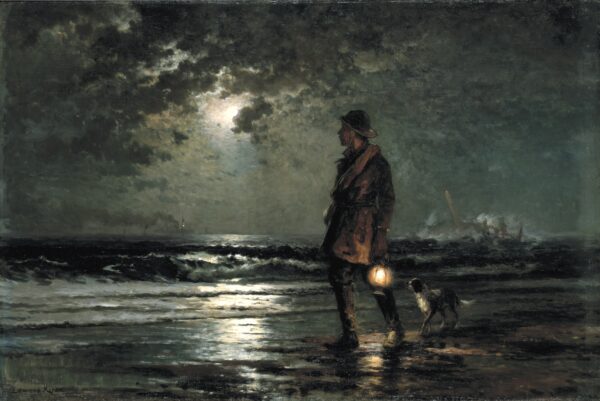
Life Saving Patrol by Edward Moran
Courtesy of Smithsonian American Art Museum,
Bequest of Clara L. Tuckerman
I was surprised to learn that Edward was the elder brother of the famous artist Thomas Moran, whose paintings of Yellowstone helped Congress decide to protect the Yellowstone region as America’s first national park.

Excelsior Geyser, Yellowstone Park by Thomas Moran, 1873
Courtesy of the Smithsonian American Art Museum,
Gift of Mrs. Armistead Peter III
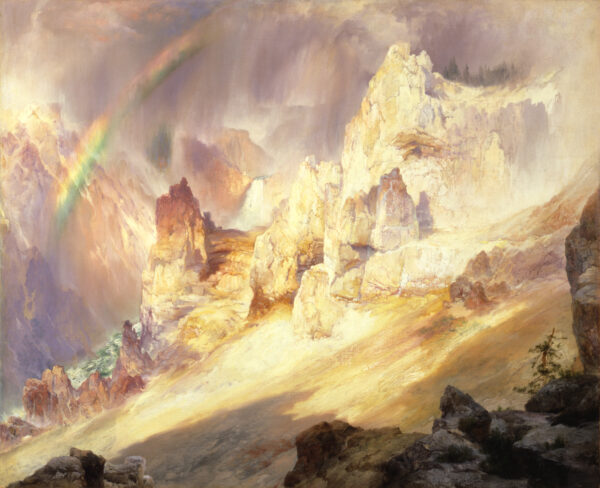
Rainbow over the Grand Canyon of the Yellowstone, 1900
by Thomas Moran
Courtesy of the Smithsonian American Art Museum,
Bequest of Marion H. Conley

Thomas Moran’s Box of Palettes and Brushes
Courtesy of the Smithsonian American Art Museum,
Bequest of Miss Ruth B. Moran
I also learned that after the Moran family of weavers came to America in 1844, several members of the family became artists. Peter, the younger brother of Edward and Thomas, who was only three years old when the family came to America, became an etcher.

A New England Orchard by Peter Moran, c. 1880-1890
Courtesy of Smithsonian American Art Museum,
Transfer from the National Museum of American History,
Division of Graphic Arts, Smithsonian Institution
Edward Moran’s son John Leon Moran specialized in painting figures. He was an accomplished watercolorist. However, his depiction of a Japanese woman below is an etching.
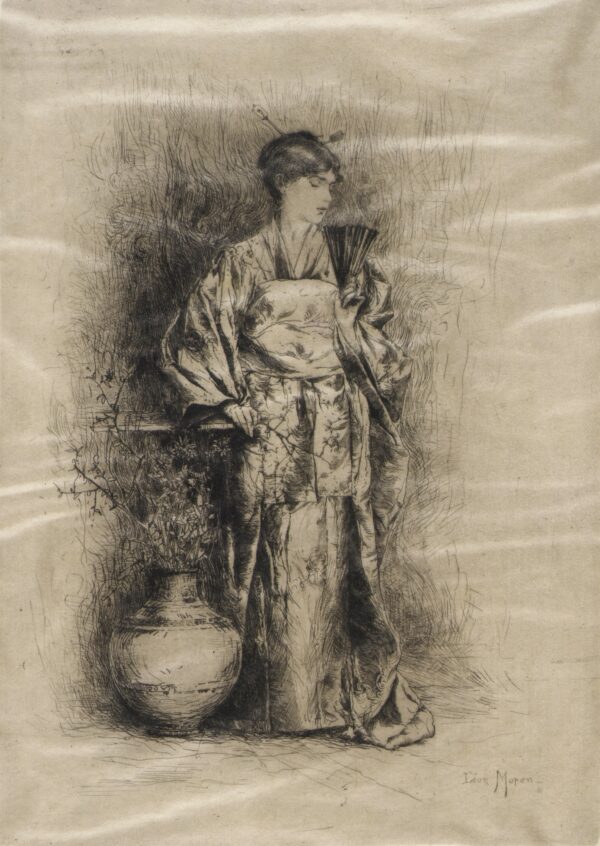
A Japanese Fantasy by John Leon Moran, 1941
Courtesy of Smithsonian American Art Museum,
Museum purchase
Edward Moran’s son Percy became a painter. Reproductions of his scenes of children and of rural life in colonial America were popular.
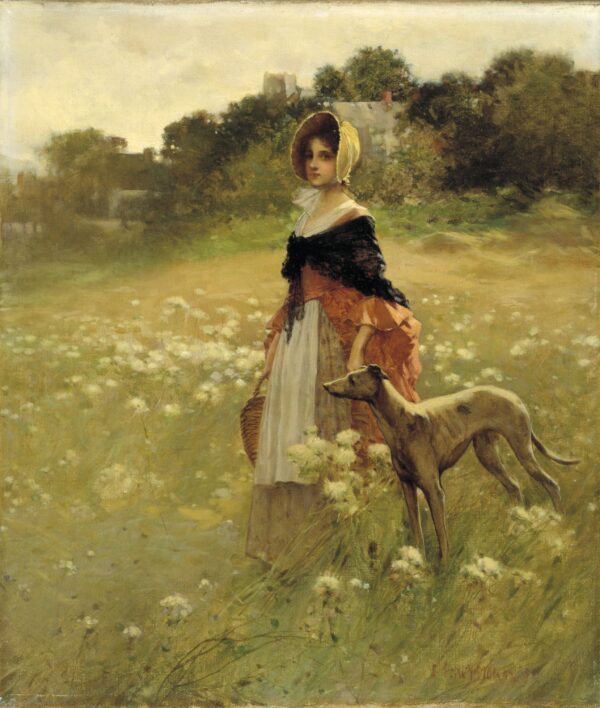
Young Girl and Dog by Percy Moran, 1890
Courtesy of the Smithsonian American Art Museum,
Bequest of Alfred Duane Pell
When I did the research for this blog post, you can imagine my surprise when I came across Young Girl and Dog. Almost immediately, I remembered seeing that girl and her dog before. No wonder! Our daughter Mary Evelyn chose this girl and her dog as part of the collage image she created for the cover of part 1 of America the Beautiful!

Mary Nimmo emigrated from Scotland to America with her family in 1852 (six years after the Morans). The Nimmos also settled in Philadelphia. They were neighbors of the Moran family. Mary married Thomas Moran. Though not an artist before her marriage, Mary began painting so that she could be a better companion to Thomas when he traveled to sketch. Even then, she did not paint very often. In 1879, Thomas encouraged his wife to try etching. Afterwards, Mary Nimmo Moran became famous as America’s best female etcher.
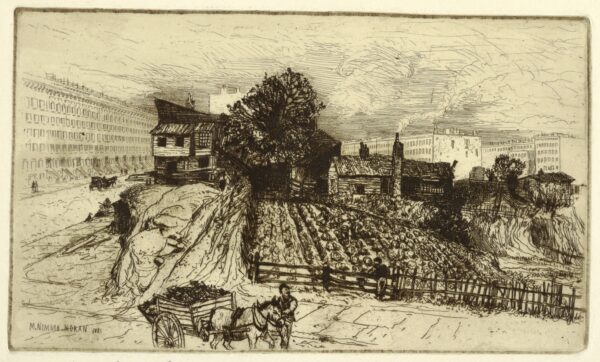
A City Farm, New York by Mary Nimmo Moran
Courtesy of the Smithsonian Institution,
Bequest of Ruth B. Moran
A street artist taught Edward Moran to draw when the family still lived in England. As I told you last week, he enjoyed drawing so much that he drew sketches on the fabric in his weaving loom. The story goes that his doing this so exasperated his family that they told him to stop weaving and take up art. I wonder if the street artist ever knew that the lessons he gave to a weaver’s son inspired a love of art that spread and produced a family of artists.
You never know what your trip to an art gallery or visit to a museum or time with Grandma or adventure at a corn maze or trip to the county courthouse might inspire in your children, so don’t be afraid to take some time off from the expected school subjects now and then. You never know what might happen.
The Moran family produced something else in addition to a love of art. They must have had a tremendous work ethic. Artists don’t produce that kind of quality and volume without working hard. In the 1938 Frank Capra movie, “You Can’t Take It with You,” Essie’s Russian ballet teacher, Kolenkhov, says that “art is 110% sweat.” I think that is true of just about anything worth doing.
In all labor there is profit
But mere talk leads only to poverty.
Proverbs 14:23

